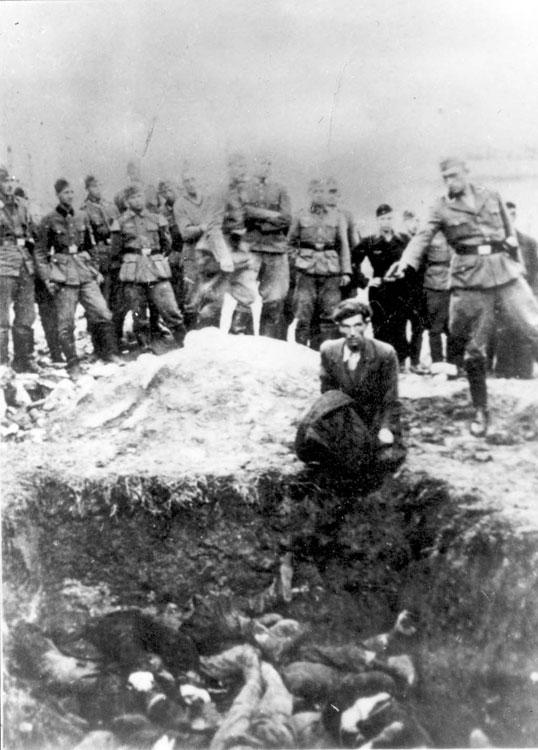Vinnitsa is situated in western Ukraine. There was a Jewish presence there from the early 16th century, and at the end of the 19th century, there were over 11,000 Jews living in Vinnitsa, more than a third of the total population. The Jewish community maintained a hospital, a shelter for the poor and a Talmud Torah, and there were branches of the Bund and the Zionist parties. When the USSR was established, the Soviet authorities banned Jewish social and political activity. Under Soviet rule, many traders, artisans and small business owners became bureaucrats and industrialists. At the same time, Yiddish culture flourished in the city: there were Yiddish schools, a Yiddish theatre and choir, a Yiddish newspaper, and even a police station manned by Yiddish-speakers. On the eve of World War II, over 33,000 Jews lived in Vinnitsa.
Germany invaded Russia on 22 June 1941, conquering almost all of Ukraine by October 1941. The mass murder units Einsatzgruppen C and D, which traveled with the German Army, as well as SD units (Security Service of the SS), murdered hundreds of thousands of Jews as well as tens of thousands of other citizens suspected of being communists or Soviet government officials. Assisting them with the murders were German and Ukrainian police, and German military units.
Einsatzgruppe C, under the command of Dr. Emil Otto Rasch, consisted of 1,000 men and traveled eastwards through Ukraine along with the advance of the German Army. During the first weeks of the campaign, with the help of the Ukrainians its members murdered Jewish men in the towns and villages of Tarnopol, Dobromil, Sambor, Vinnitsa, Zhitomir, Beila-Tcharkov, Boguslav, Babi Yar, Uman, Lubny and others.
Vinnitsa was occupied by the Germans on 19 July 1941. Beforehand, approximately 17,500 managed to flee eastwards with the retreating Red Army. The Jews were forced to wear an identifying armband with the Star of David, and their property was confiscated. They were confined in specific areas of the city and many were assigned to forced labor. At the end of July hundreds of Jewish men were murdered in the cemetery in Vinnitsa. By the summer of 1942, most of the remaining Jews in the city had been murdered. Approximately 1,000 Jews were spared because they were deemed to be essential workers working in vital industries in the city. They were transferred to labor camps in Vinnitsa and Zhitomir. Very few survived until Vinnitsa was liberated in March 1944.







